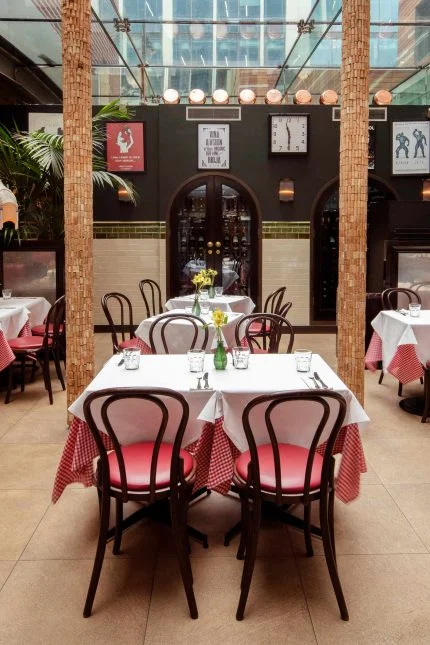-
![Restaurant Private Dining French Michelin Star City London Galvin La Chapelle]() Galvin La Chapelle
Galvin La ChapelleMichelin Starred restaurant offering modern French fine dining with a European influence. Located on Bishopsgate in The City of London.
-
![Restaurant Spitalfields Market Galvin French Bistrot Cocktail Bar Private Dining Events]() Galvin Bistrot & Bar
Galvin Bistrot & BarA traditional French Bistrot emulating the hustle and bustle of Paris with the authentic dishes to match. Located in Spitalfields, The City of London.
-
![Restaurant near me Chelmsford Essex Howe st Great Waltham Country Pub Bar Five Course Tasting Menus]() Galvin Green Man
Galvin Green ManTucked away in the Essex countryside is home to our Bib Gourmand award winning restaurant and pub. Located near Chelmsford in Essex.
Follow us on Instagram
Spitalfields History
Galvin La Chapelle & Galvin Bistrot & Bar
Galvin La Chapelle & Galvin Bistrot & Bar
Spitalfields: 800 years of hospitality.
The 25,000 or so visitors who descend on Spitalfields Market every week are greeted warmly by the artists, craftsmen and street-food traders who have rented space in the 120-year old market building. But they’re just the latest travellers to be welcomed to this fashionable and quirky district of London.
The story starts with William and Rose Brown who in 1197 founded The New Hospital of the Blessed Virgin Mary without Bishopsgate. The hospital or priory tended to the poor of the area, and provided food and lodging for pilgrims. The unwieldy name was quickly shortened to St Mary Spital – and the land around it became known as Spitalfields.
Since then, and over more than 800 years, Spitalfields has sheltered French protestants, Irish weavers, Jewish refugees and Bangladeshis fleeing war and poverty. Each community brought aspects of their own culture, which are still visible today – from the elegant homes of the Huguenot protestants who arrived in 1685, to the curry houses of Brick Lane, the first of which opened in 1968. In Spitalfields, you can find mosques, synagogues and Huguenot chapels as well as Nicholas Hawksmoor’s beautifully restored 294-year old Christ Church.
La Chapelle has its own place in the history of Spitalfields. It sits within the magnificent 130-year old, Grade II listed, St Botolph’s Hall. The building was originally part of the Central Foundation Girls’ School, which had its roots way back in 1726 when it was St Botolph’s Charity School for Children of the Poor.
St Botolph is, appropriately enough, the patron saint of wayfarers and travellers – all of whom will find a welcome at La Chapelle, in the City of London’s most welcoming district.

Galvin Green Man
Galvin Green Man
Howe Street, the hamlet with an unexpected amount of history. The Green Man, built in 1341 is, surprisingly, not the oldest historical monument in this small area of rural Essex. The pub itself has been welcoming people into its warm hearth for 700 years, originally an inn used in the traditional sense with places to sleep, and keep horses.
Some of the oldest history in Great Waltham pertains to the church which contains Roman building materials and has some of the greatest history of the area. There is also a letter dated 1449 from Queen Margaret of England and France to the Great Waltham estate, otherwise known as Langley’s. This letter is addressed to the bailiffs etc of her manor in Great Waltham. Which, coincidentally is where we get a lot of our game and fresh produce from!
It would be a sound assumption that the Green Man inn was mostly used as a coach house or Inn for people travelling to Chelmsford. This was because in 1381, the occupational data from the poll tax reports tells us that 22.7% of the population were craftsman and retailers. Therefore they would have had to travel to and from larger town centres in order to sell their goods and services, this would mean that the Green Man would have been used as a half way point, a place to get drinks after a day on the field, or even a place where goods and services were exchanged.
The symbol of the Green Man is a symbol used prevalently in this era across buildings and churches alike, he was seen as a benevolent woodland spirit, so welcoming people into the heart of the pub which had his name attached to it would have been perfect for him, and something the locals would have soundly resonated with.



